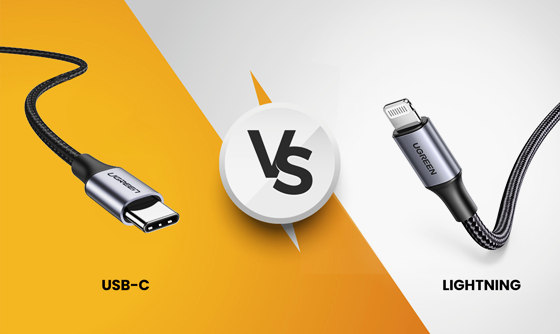USB C VS Lightning Charging Speed | ZONSAN
USB C Charger VS Lightning
USB-C and Lightning are both types of connectors that are used to charge electronic devices and transfer data.USB-C is a type of USB connector that is reversible and can be plugged into a device in either direction. It is becoming more common on newer devices, including smartphones, laptops, and tablets.
Lightning is a proprietary connector developed by Apple for their devices. It is used on iPhone, iPad, and iPod models.
One major difference between the two is that USB-C is an industry-standard connector, while Lightning is proprietary to Apple. This means that USB-C cables and chargers are more widely available and can be used with a wider variety of devices. Lightning cables, on the other hand, can only be used with Apple devices.

Lightning is a proprietary connector developed by Apple that is used by many Apple devices, including iPhones, iPads, and iPod Touches. It is designed to be small, reversible, and easy to use.
The charging speed of a device is determined by several factors, including the device's battery capacity, the power output of the charger, and the device's charging circuitry. In general, USB Type-C is able to deliver more power than Lightning and may be able to charge devices faster as a result. However, the specific charging speeds of a USB Type-C and Lightning device will depend on the specific devices and chargers being used.
It's important to note that the charging speed of a device is not necessarily determined by the connector it uses. For example, a device with a USB Type-C connector may charge more slowly than a device with a Lightning connector if it has a larger battery or if it is being charged with a slower charger. Similarly, a device with a Lightning connector may charge more quickly than a device with a USB Type-C connector if it has a smaller battery or if it is being charged with a faster charger.
USB C VS Lightning Charging Speed
USB Type-C is a reversible connector that is capable of transmitting data, power, and video signals. It is used by many smartphones, tablets, and other devices to charge and transfer data.
Lightning is a proprietary connector developed by Apple that is used by many Apple devices, including iPhones, iPads, and iPod Touches. It is designed to be small, reversible, and easy to use.
The charging speed of a device is determined by several factors, including the device's battery capacity, the power output of the charger, and the device's charging circuitry. In general, USB Type-C is able to deliver more power than Lightning and may be able to charge devices faster as a result. However, the specific charging speeds of a USB Type-C and Lightning device will depend on the specific devices and chargers being used.
It's important to note that the charging speed of a device is not necessarily determined by the connector it uses. For example, a device with a USB Type-C connector may charge more slowly than a device with a Lightning connector if it has a larger battery or if it is being charged with a slower charger. Similarly, a device with a Lightning connector may charge more quickly than a device with a USB Type-C connector if it has a smaller battery or if it is being charged with a faster charger.
